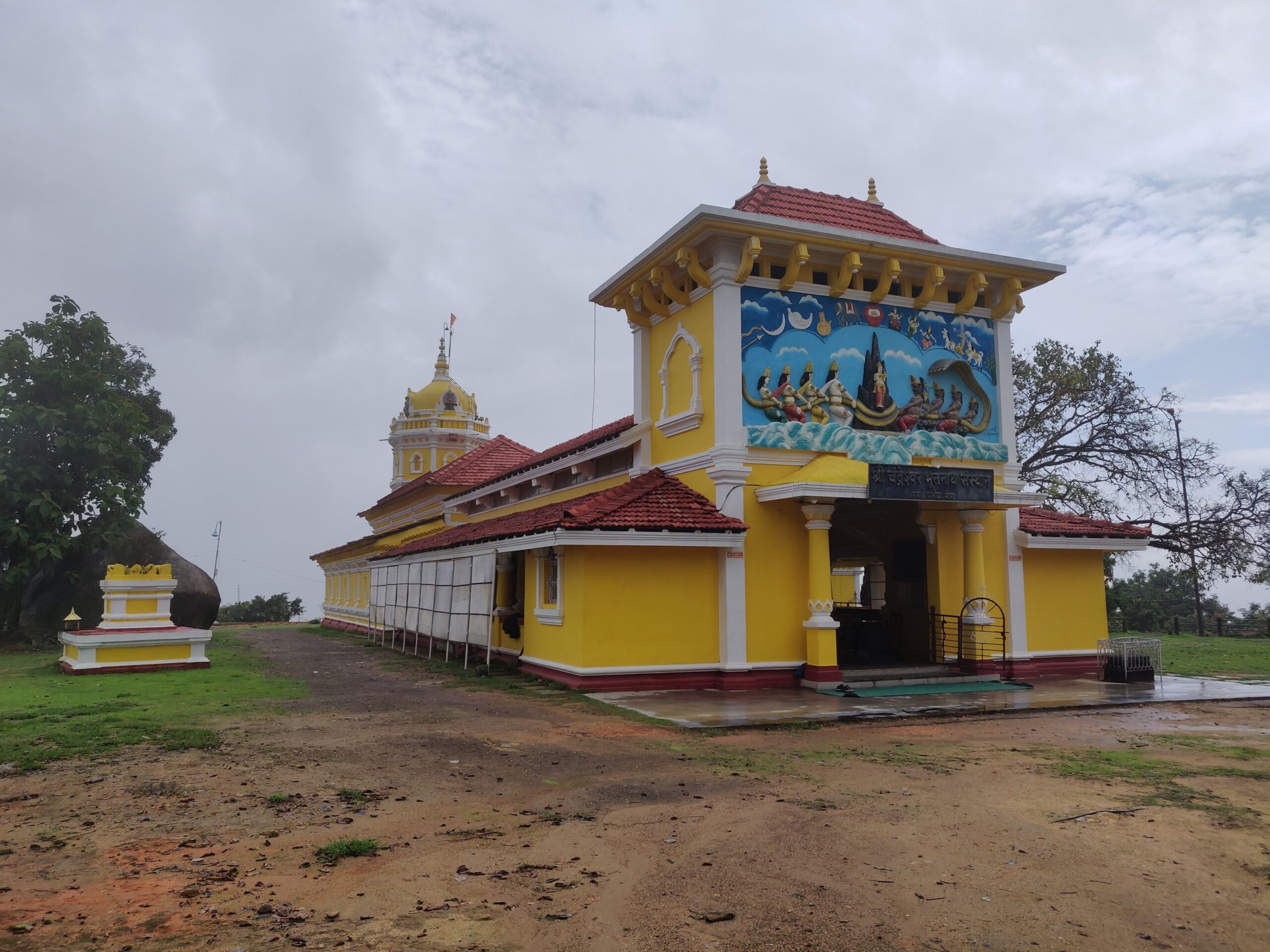Goa, a state known for its sun-kissed beaches, vibrant nightlife, and Portuguese-influenced architecture, is also a land of spiritual significance. Nestled amidst its scenic beauty and coastal charm lies the Chandreshwar Bhootnath Temple, a place of worship that not only exudes a serene aura but also holds a deep-rooted cultural and historical significance.
Table of Contents
The Legend of Chandreshwar
Every temple has its own legend, and Chandreshwar Bhootnath Temple is no exception. Legend has it that Lord Chandreshwar, a form of Lord Shiva, resides in this sacred abode. The temple derives its name from “Chandra,” meaning moon, and “Ishwar,” meaning Lord. Lord Chandreshwar is believed to bless devotees with peace, prosperity, and protection from evil forces. His divine presence is said to be particularly potent during full moon nights when the silvery glow of the moon bathes the temple in an ethereal light.
Samudra Manthan at Entrance
Adorning the entrance of Chandreshwar Bhootnath Temple is a captivating depiction of the Samudra Manthan, a pivotal episode from Hindu mythology. This intricate and visually striking artwork tells the story of the churning of the cosmic ocean, the Samudra Manthan, which symbolizes the eternal struggle between good and evil.
In this divine saga, the Devas (celestial beings) and Asuras (demons) join forces to churn the ocean using Mount Mandara as the churning rod and Vasuki, the serpent, as the rope. As they vigorously churn the ocean, myriad treasures and celestial beings emerge. Among the treasures that surface is the divine elixir of immortality, known as Amrita.
The depiction of the Samudra Manthan at the temple entrance serves as a profound reminder of the eternal quest for spiritual enlightenment and the triumph of good over evil. It welcomes visitors with a powerful message of cosmic harmony and the timeless struggle for divinity, setting the tone for a spiritually enriching experience within the sacred premises of Chandreshwar Bhootnath Temple. To know more about Samudra Manthan check the Wikipedia page Samudra Manthan.
The Temple’s Enigmatic Presence
Chandreshwar Bhootnath Temple is situated in the quaint village of Paroda in Quepem, South Goa. It’s not the grandeur of the temple that captivates you at first glance, but its understated simplicity and the sense of tranquillity that envelops the surroundings. As you approach the temple, you’ll notice lush greenery, old banyan tree. creating an idyllic setting that’s perfect for introspection and spiritual contemplation.
Reaching Chandreshwar Bhootnath Temple
The temple is conveniently located, making it accessible to travelers exploring South Goa. It’s approximately 30 kilometers from Margao, the major town in South Goa. If you’re staying in Panjim or North Goa, it’s an easy day trip. Local buses and taxis are readily available for transportation.
Festivals and Celebrations
The temple is also famous for its annual festival, which takes place in the month of February or March. During the festival, the temple is decorated with colorful lights and flowers, and devotees flock to the temple to offer prayers and seek blessings from Lord Shiva.
Overall of the Temple
Chandreshwar Bhootnath Temple in Goa is not just a place of worship; it’s a cultural treasure, a historical gem, and a spiritual oasis. Its serene ambiance, rich history, and the sense of unity it promotes make it a must-visit destination for anyone traveling to this beautiful state. Whether you’re seeking spiritual solace or simply want to immerse yourself in Goa’s diverse cultural tapestry, this temple offers an experience that’s both enriching and enlightening. It’s a place where the past and the present converge, creating a unique and timeless sense of wonder. Also check Birla Radha Krishna Temple in Goa


One comment